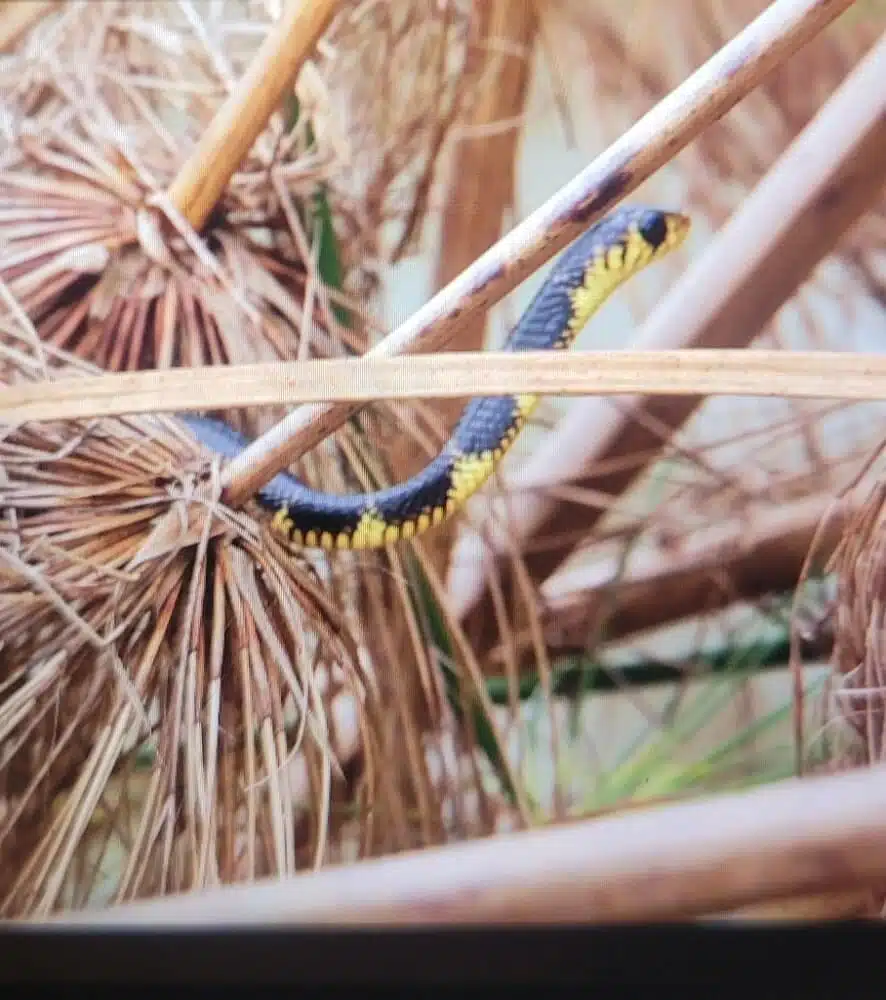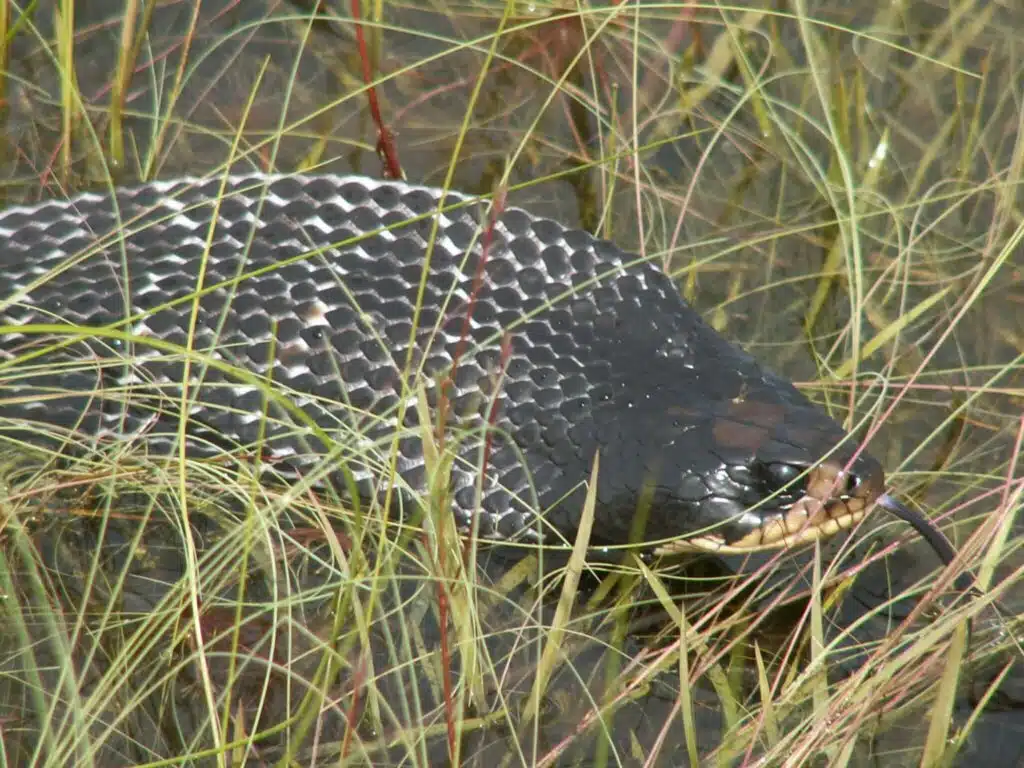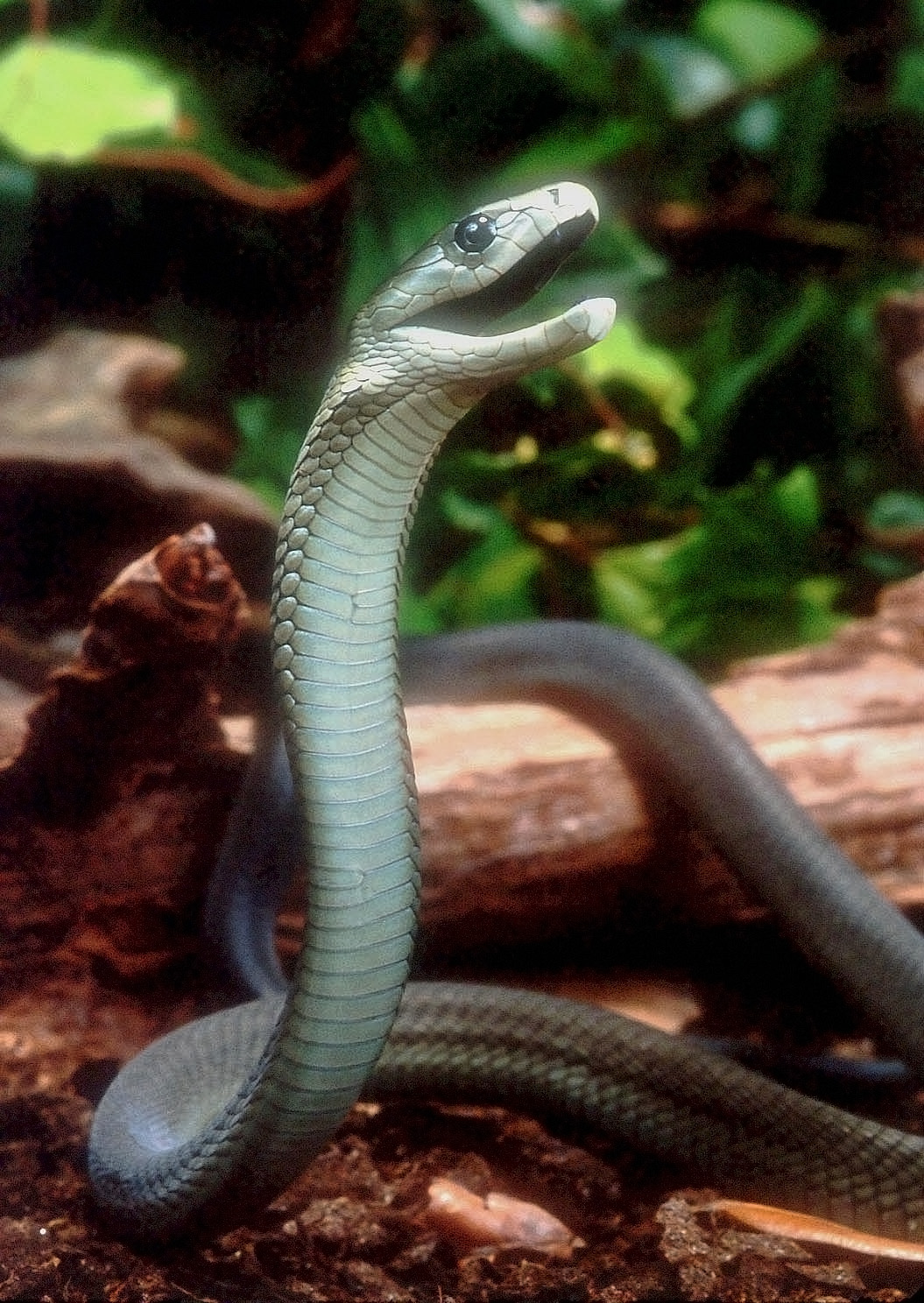Cobras are some of the most popular types of snakes around the world. These venomous snakes are often mimicked by other species both in positioning and characteristics.
Most snakes that look like cobras do this through direct mimicry techniques, mainly to keep predators away. These predators often fear cobras and they may also fear snakes that look like them,
Table of Contents
What are cobras?
Cobras are part of the Naja group of snakes. They are a highly venomous snake species known for expanding their neck ribs when in a defensive position.
True cobras also sway, often in response to the movements of a predator. These venomous snakes can be sitting or non-spitting.
Cobras are yellow, brown, green, or black. Often seen in a combination of colors, cobras don’t have uniform coloring.
Cobras measure less than 20 inches as juveniles and may reach a length of up to 12 feet.

14 Snakes That Look Like Cobras
The following species show the highest resemblance to cobras in physical traits or habits.
1. Rinkhals

Rinkhals (Hemachatus haemachatus) is part of the Hemachatus family of snakes and not a true Naja species such as actual Cobras.
Still, Rinhkals look similar to cobras with their hoods. They also elevate their heads in a defensive position.
These snakes have crossbands on the neck but they are also highly venomous.
As real cobras, Rinkhals can also spit venom up to a few feet away. These snakes are found in Southern parts of Africa where their bites cause necrosis and where antivenin is given to their victims.
This species mimics cobras with their appearance and venom. It rarely gets its venom in the eyes of the predator due to poor aiming skills.
2. Big-eyed Bamboo Snake

This species is sometimes simply referred to as The Bamboo Snake. It’s also known as The Asian Cobra.
Endemic to Asia, this is a species that looks like cobra snakes and which is found in China.
It comes in different colors such as dark gray and brown. The species is also seen in a bright green morph with yellow or white bands on its neck.
Big-eyed Bamboo Snakes (Pseudoxenodon macrops) have the same hood similar to cobras and they’re also venomous. The extent to which this venom is dangerous to humans hasn’t been fully studied to this day.
3. Eastern Hog-nosed Snake

Eastern Hog-nosed Snakes (Heterodon platirhinos) are one of the few species similar to cobras that are also native to North America.
This is a snake that hisses, to act similarly to cobras. This has led to its nickname of The Hissing Snake in the US.
Eastern Hog-nosed Snakes also elevate their heads in a defensive position.
Strikes are rare as the snake only head-buts its predators to keep them away or to scare them off.
This snake uses other methods to stay safe such as playing dead or releasing a foul smell.
4. King Cobra

The King Cobra (Ophiophagus hannah) is one of the Asian natives that resemble actual cobra snakes.
Snakes of this genus are also the largest venomous snakes in Asia, often reaching a length of up to 13 feet.
This snake has a hood and a black and white banded color which may make it resemble cobras to its predators.
King Cobras can also hiss and they may also puff to keep predators away.
Human contact is rare as King Cobras prefer to avoid people. Its powerful neurotoxic venom is rarely used on humans as a result.
5. Goldie’s Tree Cobra

This agile species (Pseudohaje goldii) is an agile snake that resembles true cobras. It lives in the Central and Western regions of Africa.
Goldie’s Tree Cobra may grow to a length of up to 9 feet but it’s a very agile species, often climbing trees for food.
This predator also has a very potent venom. Goldie’s Tree Cobras are believed to have strong venom that can kill people.
No specific antivenin is discovered against this species at the moment.
6. Black Tree Cobra
The Black Tree Cobra (Pseudohaje nigra) is one of the 2 species of arboreal cobras in Africa (the other one being Goldie’s Tree Cobra).
An agile species, this snake climbs trees for small prey.
It also has potent venom and a hood which makes it similar to Naja cobras.
This snake is often seen in a black-and-white color combination in states such as Ghana or The Ivory Coast.
7. Cape Coral Snake

This species has a red color with up to 37 black bands along its body.
It has white and black bands on its neck, similar to a cobra. Cape Coral Snakes can elevate their heads, to look threatening and to resemble cobras.
Cape Coral Snakes (Aspidelaps lubricus) are further known for having a very small hood, which is a further mimicry effort.
The coloring of the species makes it a known name in the snake pet industry. This species is still venomous and its venom resembles the venom of Naja snakes.
8. Shield-nosed Cobra

This snake (Aspidelaps scutatus) is smaller than true cobra snakes but it has red and black coloring with a hood.
It also elevates its head, much like a real cobra.
Shield-nosed Cobras live in Southern parts of Africa in states such as Namibia.
It’s believed the species is highly venomous with a few confirmed deaths tied to its name. This snake is known for surviving up to a few decades with sufficient access to food.
9. Desert Cobra

These venomous species are found across the Middle East.
From Israel to Saudi Arabia, Desert Cobras (Walterinnesia aegyptia) are among the most widespread venomous species in this area.
Its neurotoxic venom has been linked to the venom of The King Cobra.
This species is seen in a black color or a gray color with white and black bands on its neck.
A hood is also spotted on the species. Desert Cobras also raise their heads and open the hood in a defensive position.
10. Eastern Black Desert Cobra

Eastern Black Desert Cobras (Walterinnesia morgani) are another species of venomous snakes that mimic cobras in The Middle East.
This is a species with highly venomous bite humans rarely see due to its nocturnal nature.
Snakes of this species have a large hood they can open before striking or in a defensive position.
Unlike other snakes that resemble cobras, Eastern Black Desert Cobras are shorter, growing up to a length of 5 feet.
11. Eastern Coral Snake

This colorful Coral snake (Micrurus fulvius) is also known as The American Cobra.
Snakes of this species are also venomous with neurotoxic venom. Antivenin is given to those bitten by the species.
A multi-colored body is specific to the species. Red, and, yellow bands are specific to the species.
Unlike most other cobra-mimicking snakes, Eastern Coral Snakes only live in Southern US territories.
12. False Water Cobra

These types of aquatic snakes (Hydrodynastes gigas) are known for their resembles true cobras through the presence of a hood around the head.
False Water Cobras do not elevate their heads when cornered as they only open the hood and remain parallel to the ground.

The species is native to South America and it has similar sizing to true Naja cobras.
It can grow to almost 10 feet with most individuals measuring anywhere between 8 and 9 feet.
False Water Cobras is a diurnal and agile predator. It climbs and swims but most of its diet is comprised of fish.
False Water Cobras are venomous but not necessarily lethal. Long bites of the species are problematic compared to short bites.
13. Oriental Ratsnake

Oriental Ratsankes (Ptyas mucosa) are endemic to Asia. This is one of the non-venomous snakes that mimic cobras.
Snakes of this family are particularly known for mimicking King Cobras as they share the same environment.
While they cannot hiss, Oriental Ratsnakes often emit a bellowing sound.
This makes them vulnerable to human predation as many people kill them as they’re misidentified as cobras.
Oriental Ratsnakes are further known for their gray or yellow coloring. They lack a hood despite being able to elevate their heads above the ground, unlike true cobra snakes.
14. Black Mamba

Black Mamba snakes (Dendroaspis polylepis) are native to Sub-Saharan Africa.
This is one of the most venomous snakes that looks and acts like Naja cobras in Africa.
Its venom can kill humans without quick antivenin shots.
The species is both terrestrial and arboreal. It raises its head above the ground and it may also hiss or open its hood similarly to cobra snakes.
A secure species by numbers, this snake only bites when truly provoked.
Found in savannas and woodlands, the species has variable coloring. Gray and brown morphs are common dorsally while white is specific to its ventral side.
Snakes of this family have a similar length and width to actual cobras. They grow to a full size between 6 and 7 feet with only rare specimens reaching 9 feet.